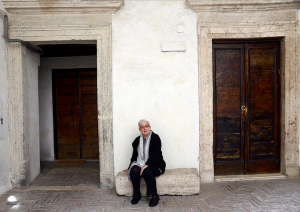FEATURES Discovering Italy through Ghettos and Giudecche
Italians know best: there are several types of tourists.
There are “mainstream” tourists, who visit the most popular sites and think about the Facebook album they will upload once back home even before taking the pictures. There are “feel-at-home” tourists, who want to experience each place they visit eating in local places, attending traditional festivals, and downloading local pop songs. Finally, there are also “educated” tourists, who read hundreds of books about the place they are visiting and spend hours in museums focusing on each detail.
The last category of tourists – the educated ones – will be pleased to hear about a new series of guides published by the Italian “Il Mulino”. The new editorial series, entitled “Ritrovare l’Italia” (Rediscovering Italy) was inaugurated in June by Anna Foa’s “Andare per Ghetti e Giudecche” (in English, “Going Around Ghettos and Giudecche, English translation not available yet), a short book that aims at telling the history of the millenary Jewish presence in Italy, a presence that dates back to 2,000 years ago.
Dr. Foa, a renowned historian, wrote the book focusing on the most relevant moments throughout the centuries and telling a few miscellaneous facts that “mainstream” tourists usually ignore.
“In Italy there have never been proclamations of religious uniformity, as opposed to what occurred in other monarchies, such as England, Franca, Spain and Portugal” wrote the author in the book. “The Jewish minority has always been present in most of the Italian territory”.
The guide ranges from a city to another, from a period of time to another.
For instance, a part of the book dwells on the Jewish community of Mantova, which exists since the 12th century and for many centuries has been an important institution for the local cultural life. Anna Foa wrote that in 1484 a Franciscan priest, Bernardo da Feltre, incited the population against the Jews paving the way to centuries of anti-Semitism.
Anti-Semitism reached one of its peaks in Italy with the establishment of hundreds of ghettos, closed areas where the Jews were confined and separated from the rest of the population. The first ghetto was established in Venice in 1516. Before the ghettos, there were the less-known “giudecche”, open areas that the Jews used to share with the Christians. The “giudecche” were spread around the entire Peninsula.
The book also goes “behind the scenes” of several works of art and monuments, such as the Mole Antonelliana in Turin, northern Italy. This majestic building was originally built as a new synagogue for the local community, after Carlo Alberto di Savoia granted new rights to the Jews in 1848. “It was supposed to be an emblem of emancipation, after many centuries of oppression, when the synagogues could not exceed in height the surrounding houses” Anna Foa told to the Italian newspaper “Corriere della Sera”. The Mole Antonelliana today stands out of the city’s skyline, but was never used as a synagogue. In fact, the money of the Jewish community was not enough to complete the building, which was given to the municipality and today has become the National Cinema Museum.
“Andare per ghetti e giudecche” is the story of a minority that still plays a fundamental role in the Italian cultural, religious and historical heritage. A minority that has moved a lot from one place to another, often evolving, at times diminishing, at times growing, but never ceasing to exist.

